Artist: George Campbell RHA RUA (1917-1979) Title: Spanish Maid Plucking Rooster (1965) Signature: signed lower right and titled verso Medium: oil on board Size: 76½ x 50cm (30.1 x 19.7in) Framed Size: 90 x 64.3cm (35.4 x 25.3in) Provenance: The Ritchie Hendriks Gallery, Dublin (label verso); Collection of Martin Prescott Esq.,1965; Private Collection Exhibited: Richie Hendriks Gallery, 'Paintings & Sculpture by Irish Artists', April-May, 1965, Cat. No. 34 a#morebtn { color: #de1d01; } a#morebtn:hover { cursor: pointer;} Exhibited in David Hendriks gallery in 1965, Spanish Maid Plucking Rooster reveals the influence of stained-glass designs Campbell was working on in Abbey Stained Glass Studios in Dublin in the early 1960's. This period marked a turning point in Campbell's career after he received media attention f... Read more Exhibited in David Hendriks gallery in 1965, Spanish Maid Plucking Rooster reveals the influence of stained-glass designs Campbell was working on in Abbey Stained Glass Studios in Dublin in the early 1960's. This period marked a turning point in Campbell's career after he received media attention from a number of painting awards which resulted in Campbell been given several Church commissions. The commissions coincided with building reforms in the Church and the advent of new technology, materials and forms of coloured glass. Acknowledging his debt to Picasso, Braque and Goya, the evolution of Campbell's painting style peaked in this period largely due to working with these new forms of stained glass. Spanish Maid Plucking Rooster shows dominant colour, bold lines and strong shapes which was a feature of his designs for the Galway Cathedral, St Dominic's at Athy, Co. Kildare and the boat shaped Church of Our Lady, Star of the Sea, Desertegney, Co. Donegal. In the post war atmosphere, George and his wife, Madge discovered that Andalusia in Spain offered them cheap accommodation, and a rich cultural life at a time when they struggled financially. Campbell first travelled to Spain in 1951 with his friend, Gerard Dillon and on arriving at their final destination of Malaga, Campbell was immediately attracted to the Moorish culture and sunny weather. Returning to the South of Spain annually for the winter, he supplemented his income by playing his guitar at cafés where he became friendly with families of bullfighters. He also socialized with Romani gypsy families who lived in caves to learn 'true' Flamenco music. The sitter may represent a woman from one of these families or may be inspired from a photograph when he was out on one of his regular walks around coastal towns with his camera when he liked to capture local women sitting or standing outside the low doors of their cottages from dawn until dusk washing, making fishing nets or plucking roosters in preparation for a family gathering. On the back of the painting, there is evidence that Campbell changed the original title which he sometimes did to suit an Irish audience. In his solo exhibition later that year at the Hendriks gallery, he included scenes of Spanish gypsies, street sellers, and musicians. Some art critics labelled Campbell out of date during dramatic visual art movements in the 1960's driven by a generation of younger artists who redefined art terms from 'fine art' to 'pop art' originating in England in the early 1960's. While Ireland was experiencing economic prosperity and experiencing American abstraction, Campbell's life in Spain remained economically depressed under the authoritarian system of the Francoist dictatorship. This subject of a woman plucking a rooster may have seemed at odds with the rise of a new aesthetic language that was taking place in Dublin at that time. Campbell's focus, however remained on life around him and he adopted an individual style wrestling with shapes, manipulating paint to achieve a semi-abstract cubist
Artist: George Campbell RHA RUA (1917-1979) Title: Spanish Maid Plucking Rooster (1965) Signature: signed lower right and titled verso Medium: oil on board Size: 76½ x 50cm (30.1 x 19.7in) Framed Size: 90 x 64.3cm (35.4 x 25.3in) Provenance: The Ritchie Hendriks Gallery, Dublin (label verso); Collection of Martin Prescott Esq.,1965; Private Collection Exhibited: Richie Hendriks Gallery, 'Paintings & Sculpture by Irish Artists', April-May, 1965, Cat. No. 34 a#morebtn { color: #de1d01; } a#morebtn:hover { cursor: pointer;} Exhibited in David Hendriks gallery in 1965, Spanish Maid Plucking Rooster reveals the influence of stained-glass designs Campbell was working on in Abbey Stained Glass Studios in Dublin in the early 1960's. This period marked a turning point in Campbell's career after he received media attention f... Read more Exhibited in David Hendriks gallery in 1965, Spanish Maid Plucking Rooster reveals the influence of stained-glass designs Campbell was working on in Abbey Stained Glass Studios in Dublin in the early 1960's. This period marked a turning point in Campbell's career after he received media attention from a number of painting awards which resulted in Campbell been given several Church commissions. The commissions coincided with building reforms in the Church and the advent of new technology, materials and forms of coloured glass. Acknowledging his debt to Picasso, Braque and Goya, the evolution of Campbell's painting style peaked in this period largely due to working with these new forms of stained glass. Spanish Maid Plucking Rooster shows dominant colour, bold lines and strong shapes which was a feature of his designs for the Galway Cathedral, St Dominic's at Athy, Co. Kildare and the boat shaped Church of Our Lady, Star of the Sea, Desertegney, Co. Donegal. In the post war atmosphere, George and his wife, Madge discovered that Andalusia in Spain offered them cheap accommodation, and a rich cultural life at a time when they struggled financially. Campbell first travelled to Spain in 1951 with his friend, Gerard Dillon and on arriving at their final destination of Malaga, Campbell was immediately attracted to the Moorish culture and sunny weather. Returning to the South of Spain annually for the winter, he supplemented his income by playing his guitar at cafés where he became friendly with families of bullfighters. He also socialized with Romani gypsy families who lived in caves to learn 'true' Flamenco music. The sitter may represent a woman from one of these families or may be inspired from a photograph when he was out on one of his regular walks around coastal towns with his camera when he liked to capture local women sitting or standing outside the low doors of their cottages from dawn until dusk washing, making fishing nets or plucking roosters in preparation for a family gathering. On the back of the painting, there is evidence that Campbell changed the original title which he sometimes did to suit an Irish audience. In his solo exhibition later that year at the Hendriks gallery, he included scenes of Spanish gypsies, street sellers, and musicians. Some art critics labelled Campbell out of date during dramatic visual art movements in the 1960's driven by a generation of younger artists who redefined art terms from 'fine art' to 'pop art' originating in England in the early 1960's. While Ireland was experiencing economic prosperity and experiencing American abstraction, Campbell's life in Spain remained economically depressed under the authoritarian system of the Francoist dictatorship. This subject of a woman plucking a rooster may have seemed at odds with the rise of a new aesthetic language that was taking place in Dublin at that time. Campbell's focus, however remained on life around him and he adopted an individual style wrestling with shapes, manipulating paint to achieve a semi-abstract cubist
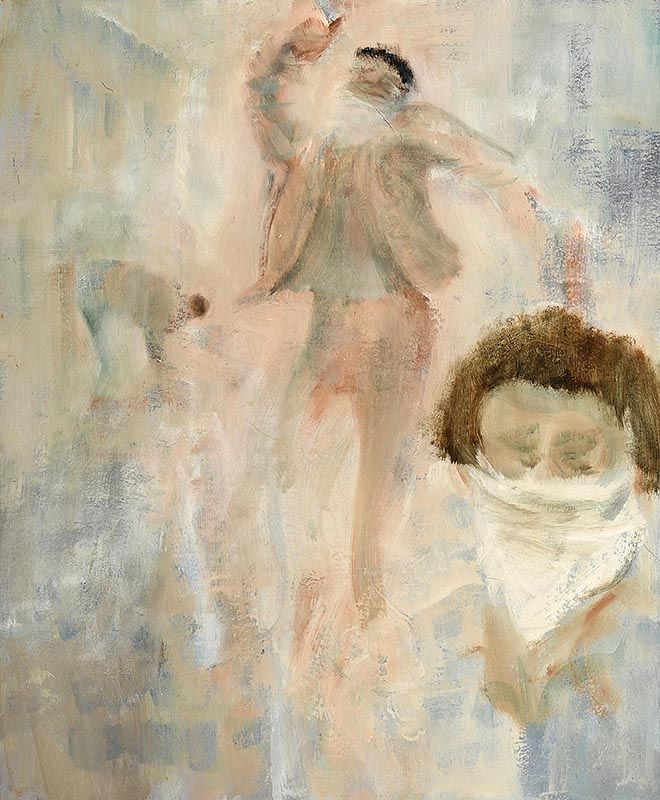
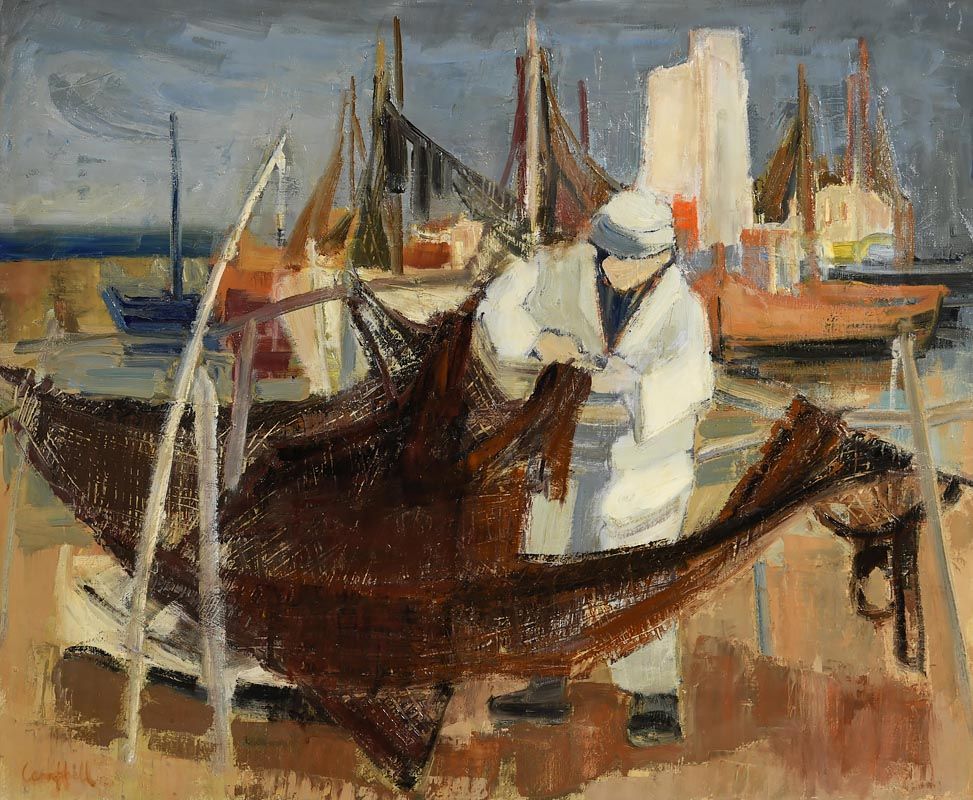
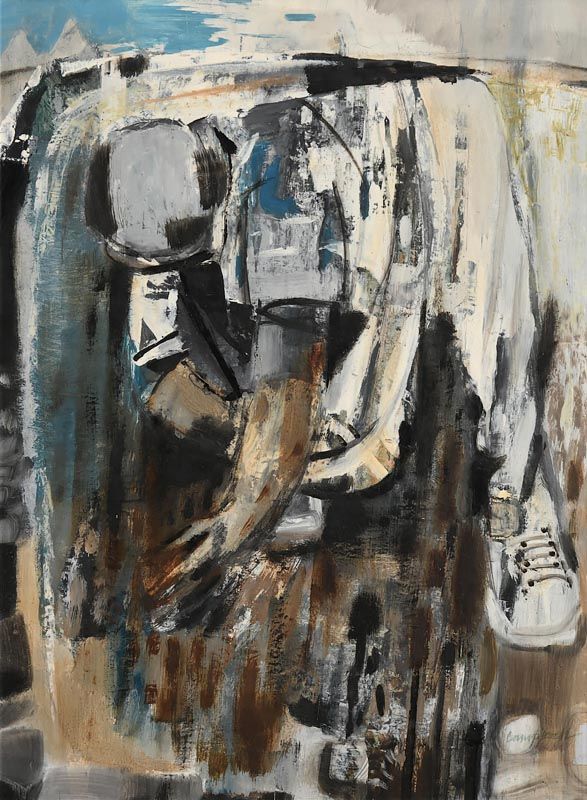
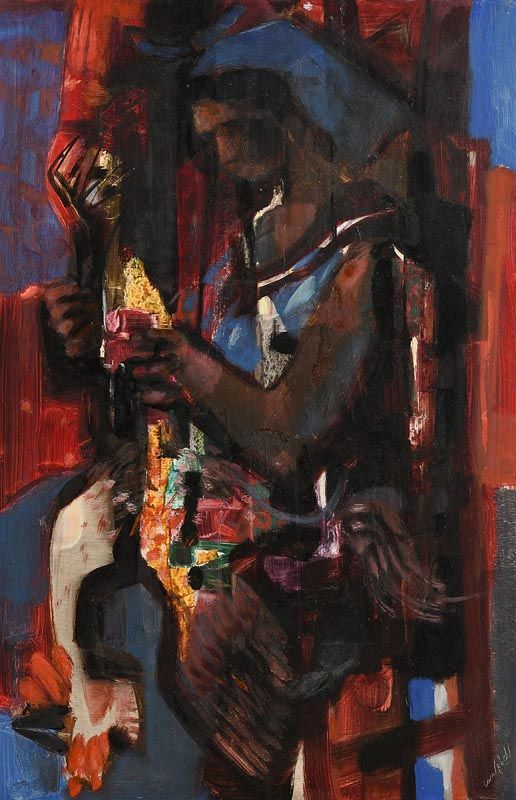
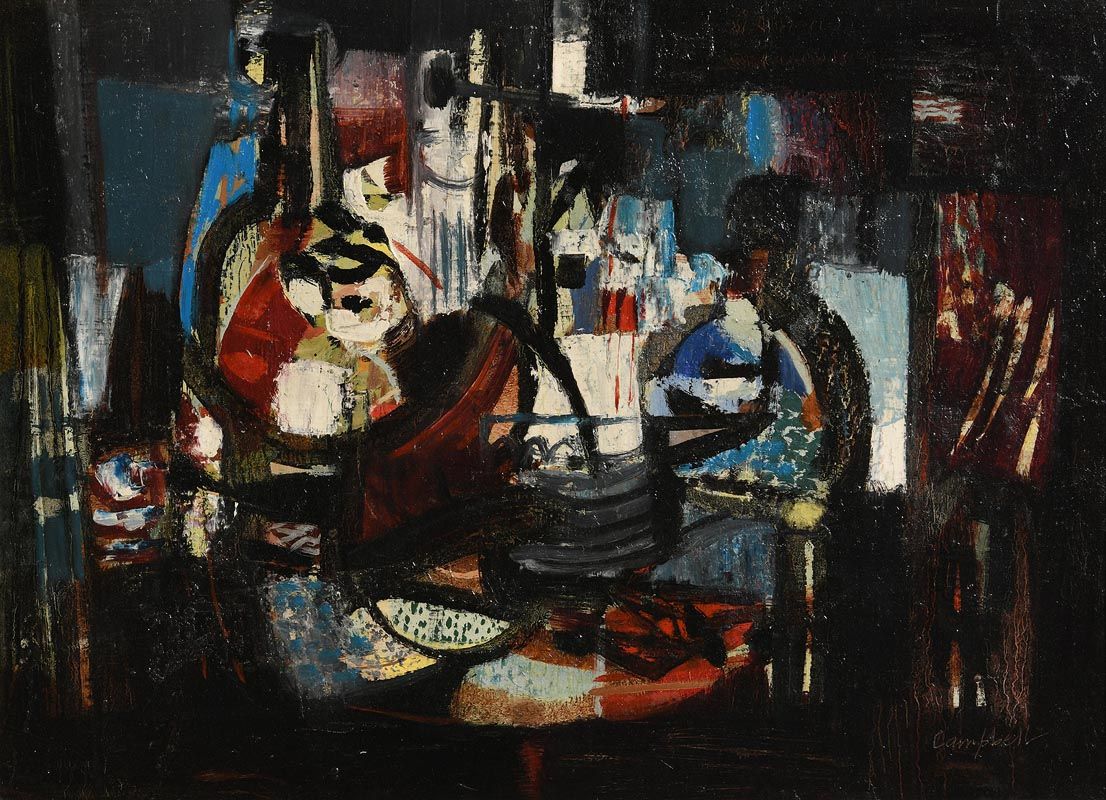
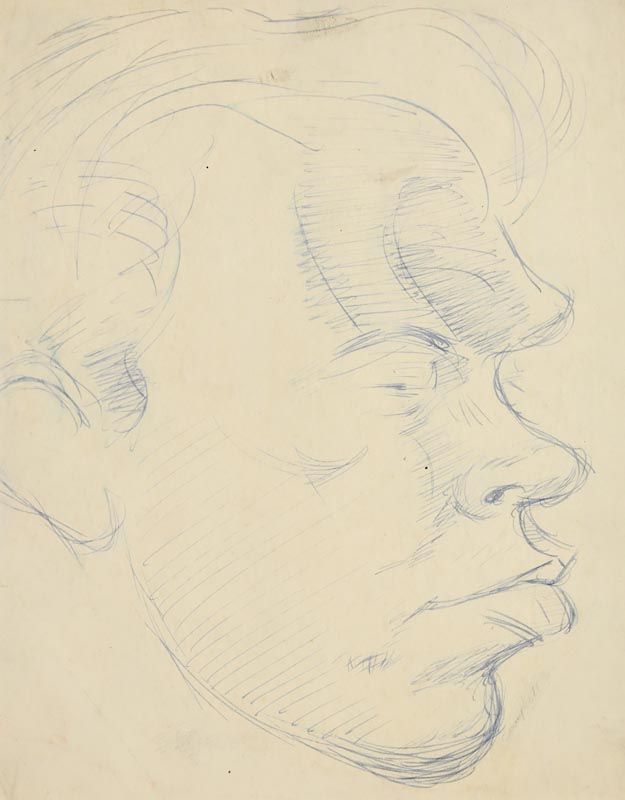
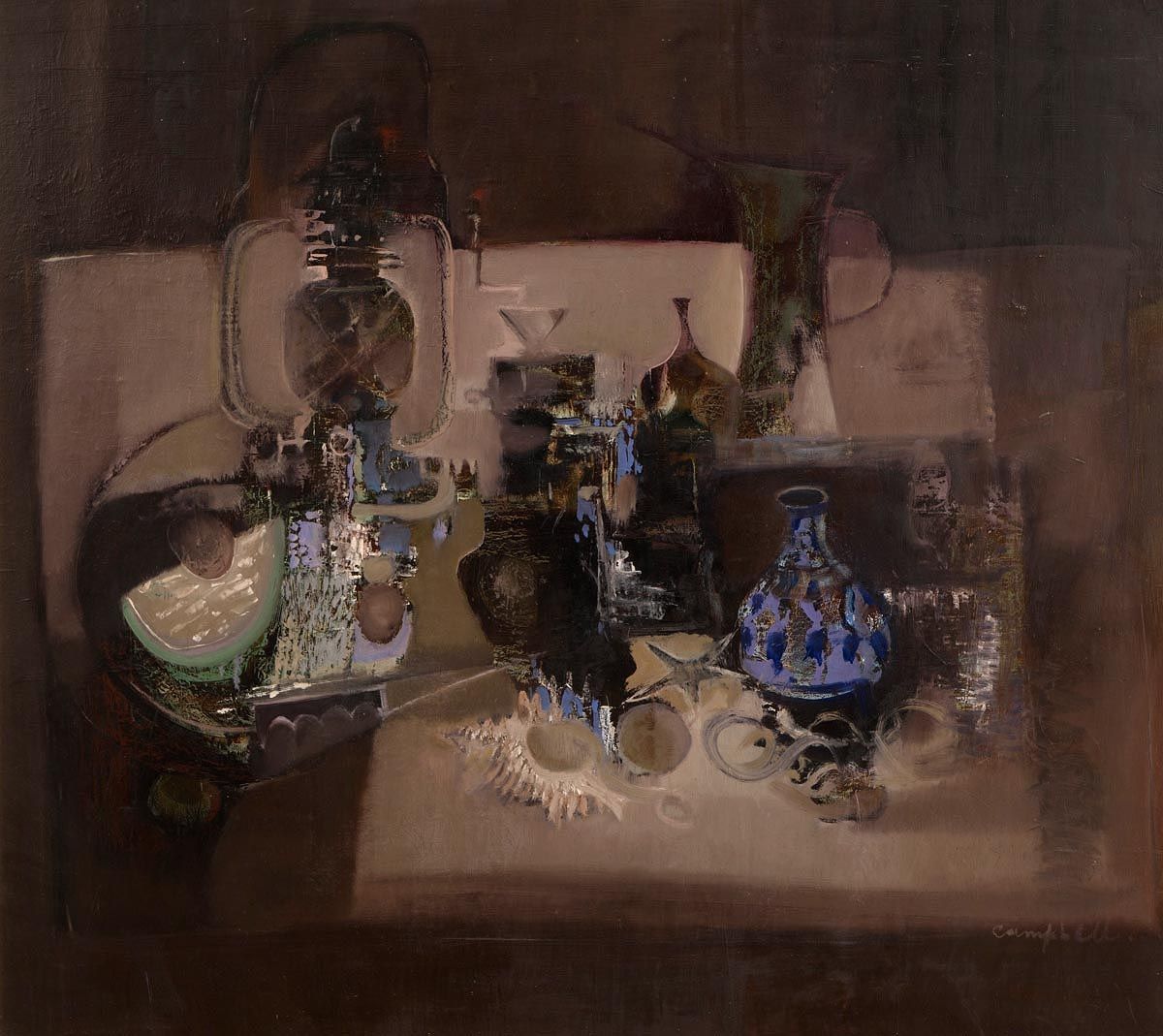
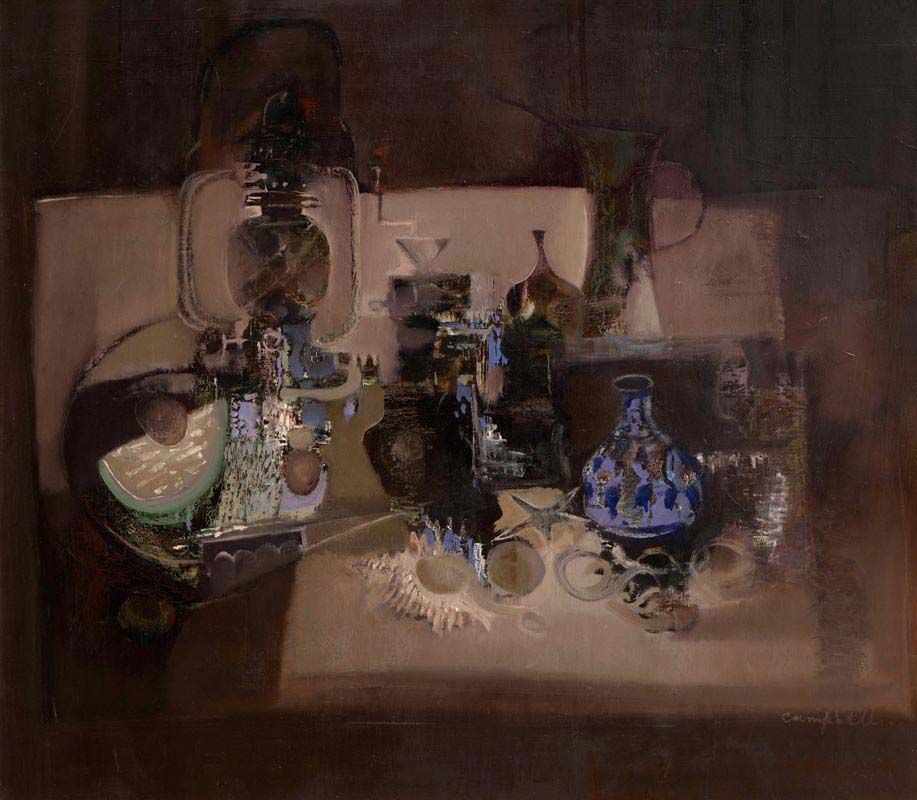
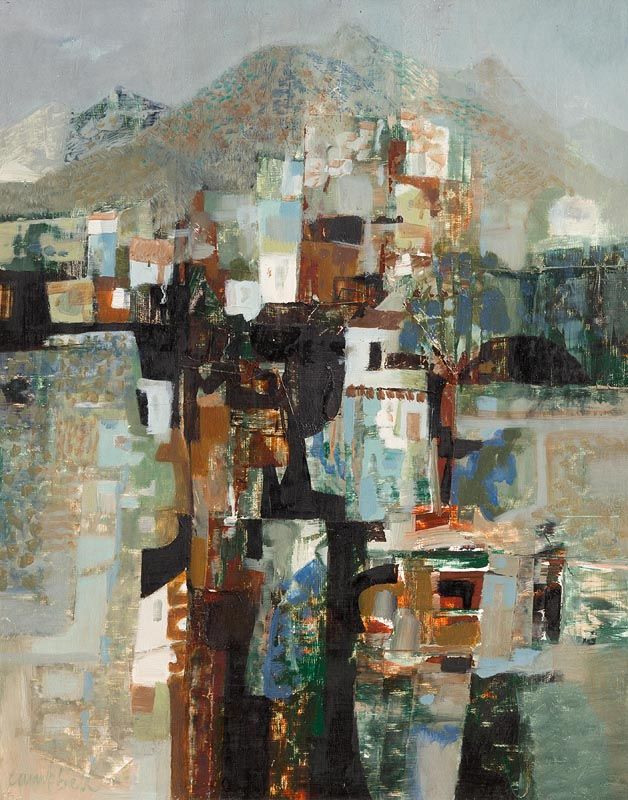
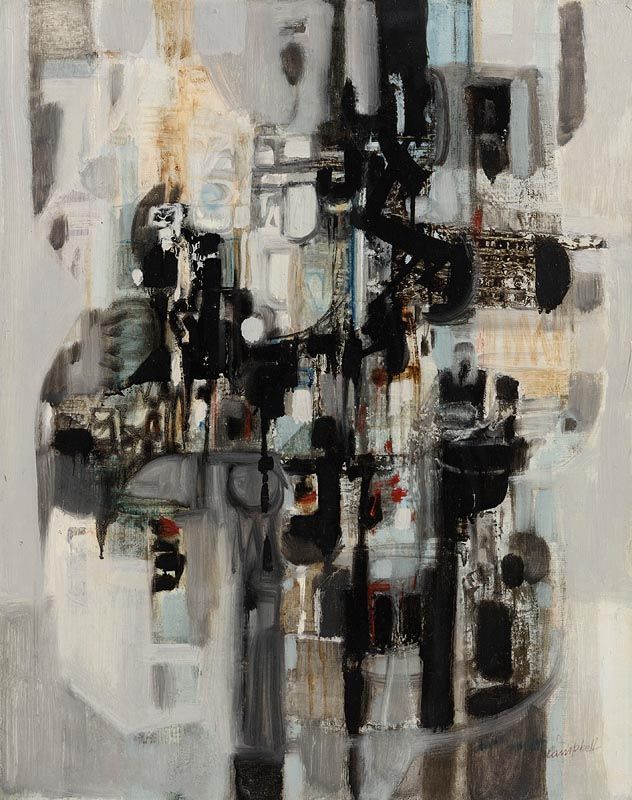
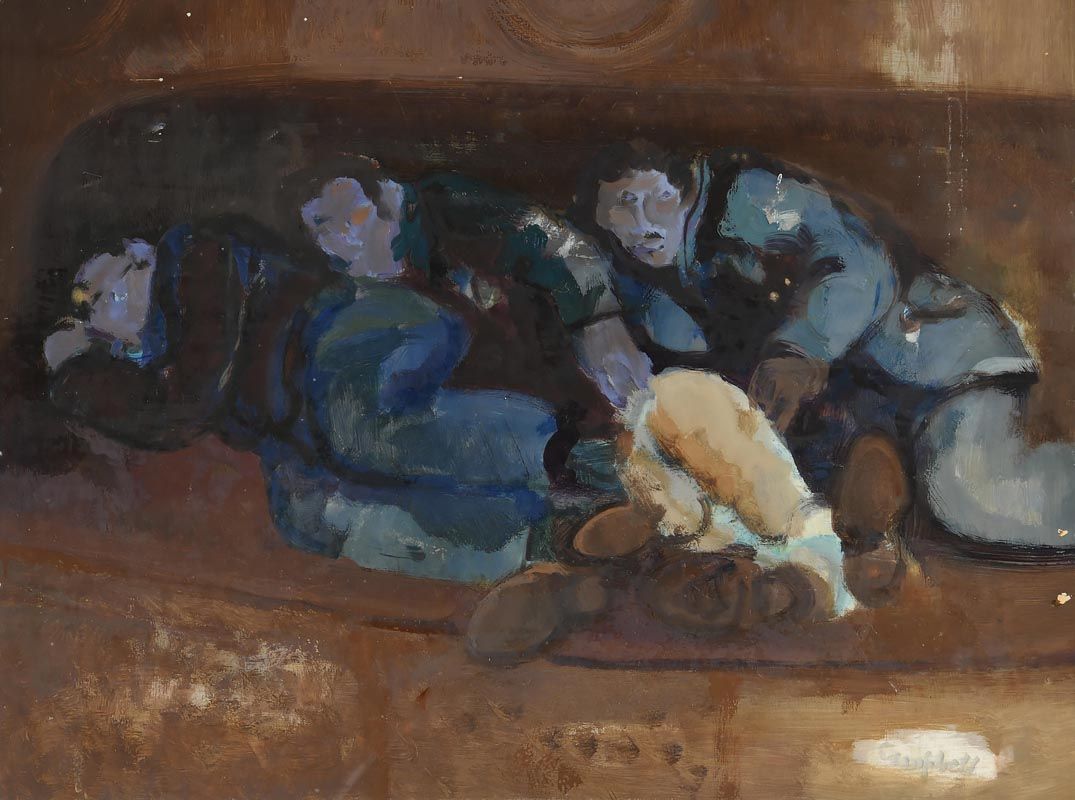
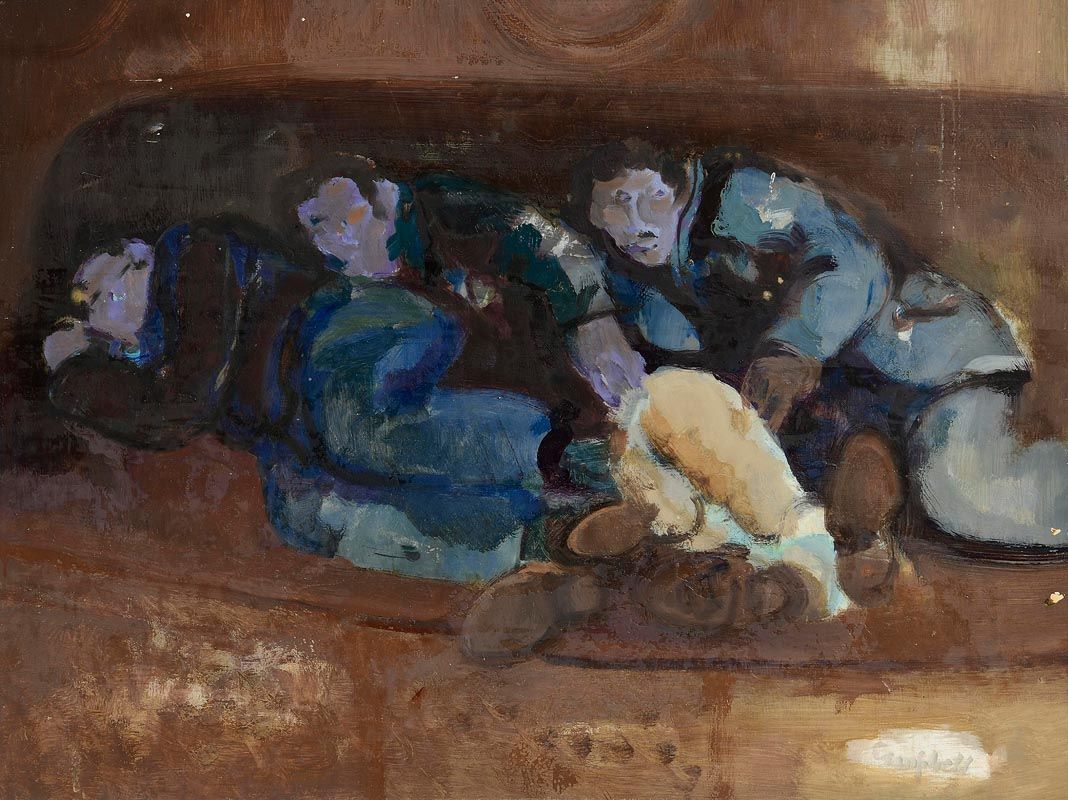
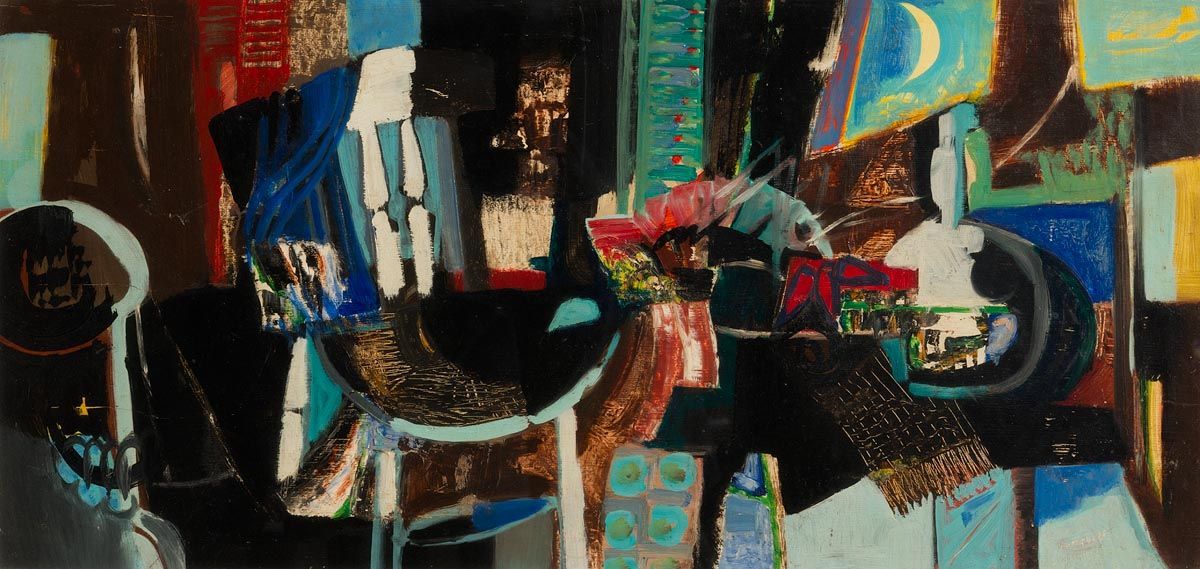
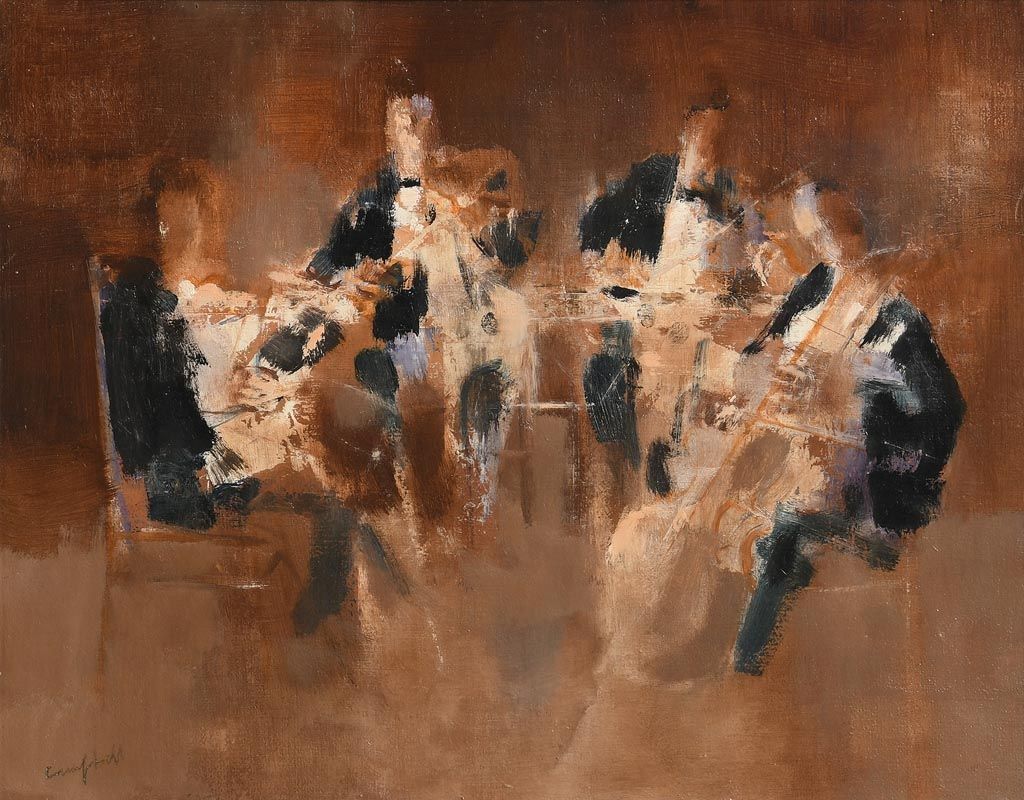
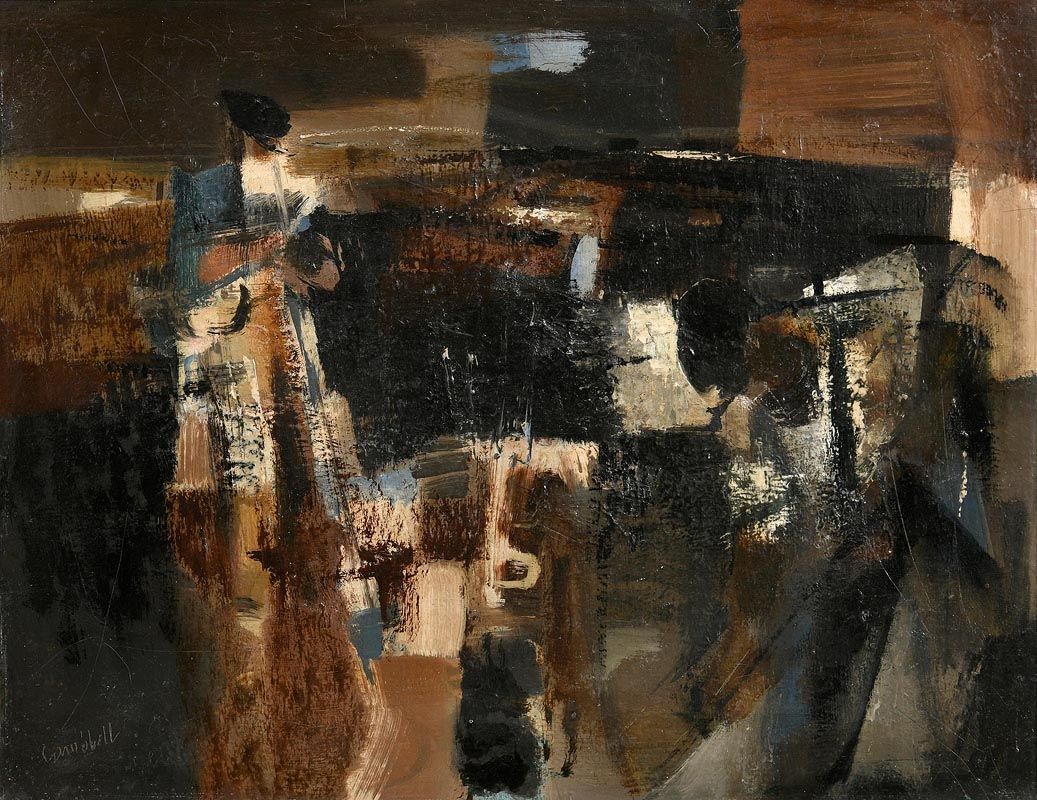
Try LotSearch and its premium features for 7 days - without any costs!
Be notified automatically about new items in upcoming auctions.
Create an alert